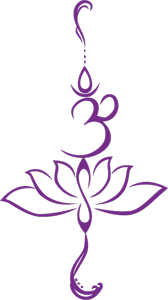Massage for Chronic Pain
 If you have ever lived with chronic pain, you know how frustrating life can be. Every day, you deal with aches that have little or no relief, and your body never seems to be at peace. You are not alone; in 2011, a study from the Institute of Medicine found that over 100 million Americans lived a lifestyle that involved chronic pain. Chronic pain lingers long after an injury, accident, or trauma. Chronic pain can occur in the form of back pain, headaches, or muscle aches.
If you have ever lived with chronic pain, you know how frustrating life can be. Every day, you deal with aches that have little or no relief, and your body never seems to be at peace. You are not alone; in 2011, a study from the Institute of Medicine found that over 100 million Americans lived a lifestyle that involved chronic pain. Chronic pain lingers long after an injury, accident, or trauma. Chronic pain can occur in the form of back pain, headaches, or muscle aches.
Treatment options vary from person to person, and can include acupuncture, transcranial magnetic stimulation, medication, and exercise. Another form of relief for individuals who suffer from chronic pain is massage therapy. According to Alt MD, massage works by making an interruption in the pain cycle. When someone experiences pain, muscles around the site become tight and work to protect the area. Massage loosens the muscles, improves circulation, and promotes relaxation. Chronic pain can make it difficult to move; massage therapy can soften tissues to help mobility.
In a study done on chronic tension headache sufferers who received massage therapy treatment on neck and shoulder muscles, the results found headache frequency significantly reduced even in the first week.
Massage is thousands of years old and has been utilized by all cultures and types of people since second century B.C. Although massage therapy may never fully rid the body of chronic pain, it can be an effective course of pain management. Medscape notes that massage is viewed as an “adjunctive therapy” and not as a main course of treatment in the area of chronic pain. Massage helps to relax the muscles, increase endorphins, and increase circulation while encouraging more blood flow.
Types of Massage that May Be Helpful for Chronic Pain
- Swedish massage: Includes gentle kneading, long strokes, and deep circular movement
- Shiatsu: Increases the flow of energy and helps with balance
- Trigger point therapy: Steady pressure is applied to specific areas in order to release muscle spasms
- Deep tissue massage: Firm pressure to deep muscles and connective tissues help in pain relief
In order for massage therapy to be effective, individuals should seek treatment on a regular basis. Always be upfront with your massage therapist; if you begin to feel increasing pain or discomfort, say something right away. The goal is to relieve pain, not increase discomfort. Any therapist you seek out should be certified. Regular exercise and stretching can also help with chronic pain management.
Always talk to your primary care physician before beginning any new pain management treatment. The type of massage you seek may depend on the condition you are dealing with. It is important to talk to your massage therapist in order to determine the best massage according to the chronic pain you experience.
Chronic pain may be a part of your life, but it does not have to determine the type of life you live. Seek out the best pain management treatments for your health as you continue on a journey of living well.


